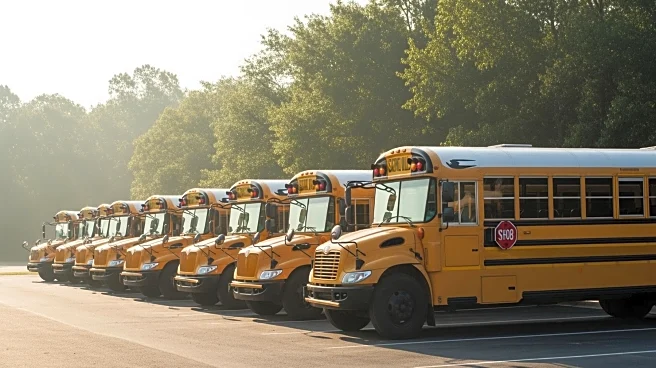What's Happening?
Public school districts in Ohio are facing persistent bus driver shortages, a problem that affects over 90% of school districts nationwide. The shortage is partly due to the requirement for public schools
to transport non-public school students, which has increased the demand for bus drivers. Since the pandemic, Ohio has seen a significant drop in the number of active bus drivers, from 25,706 to 18,817. Factors contributing to the shortage include low wages, part-time work with unpredictable schedules, and an aging workforce. Additionally, the elimination of state funding for school bus purchases in 2009 has forced districts to bear the financial burden of replacing buses.
Why It's Important?
The bus driver shortage in Ohio highlights broader challenges in the education and transportation sectors. The shortage affects not only public school students but also those attending private and charter schools, leading to longer bus routes and logistical challenges. This situation underscores the need for sustainable solutions to ensure reliable student transportation. The financial strain on school districts, coupled with the aging workforce, calls for policy interventions to attract and retain bus drivers. The shortage also raises questions about the equitable distribution of resources and the prioritization of public versus non-public school transportation.
What's Next?
Ohio school districts are exploring alternative solutions, such as paying parents to transport their children, though this approach is costly. Some districts, like Columbus City Schools, are considering eliminating busing altogether and providing public transit passes for students. State lawmakers are also examining other transportation models, including countywide busing systems, to address the shortage. These discussions may lead to legislative changes aimed at improving the efficiency and sustainability of student transportation in Ohio.












